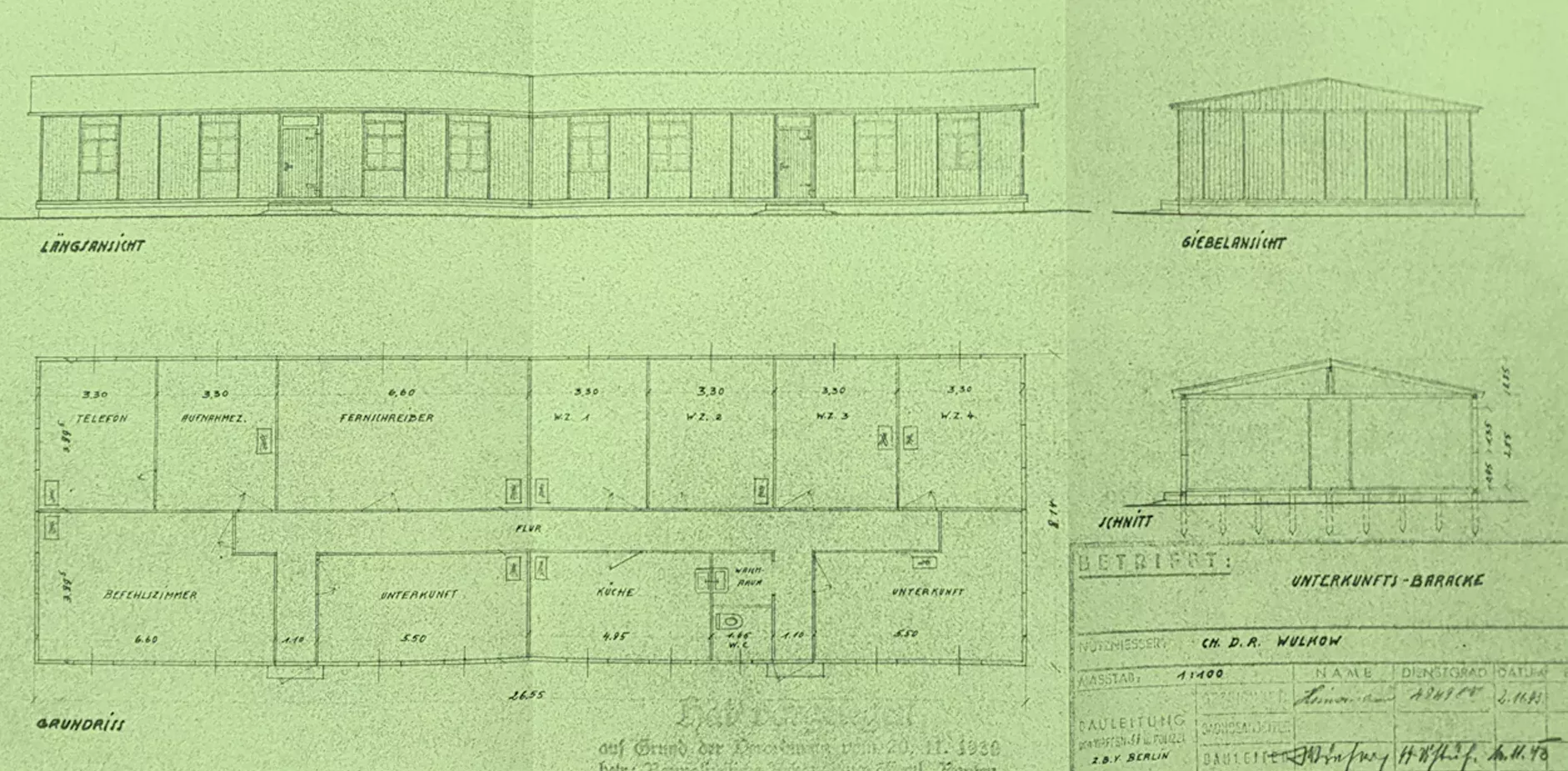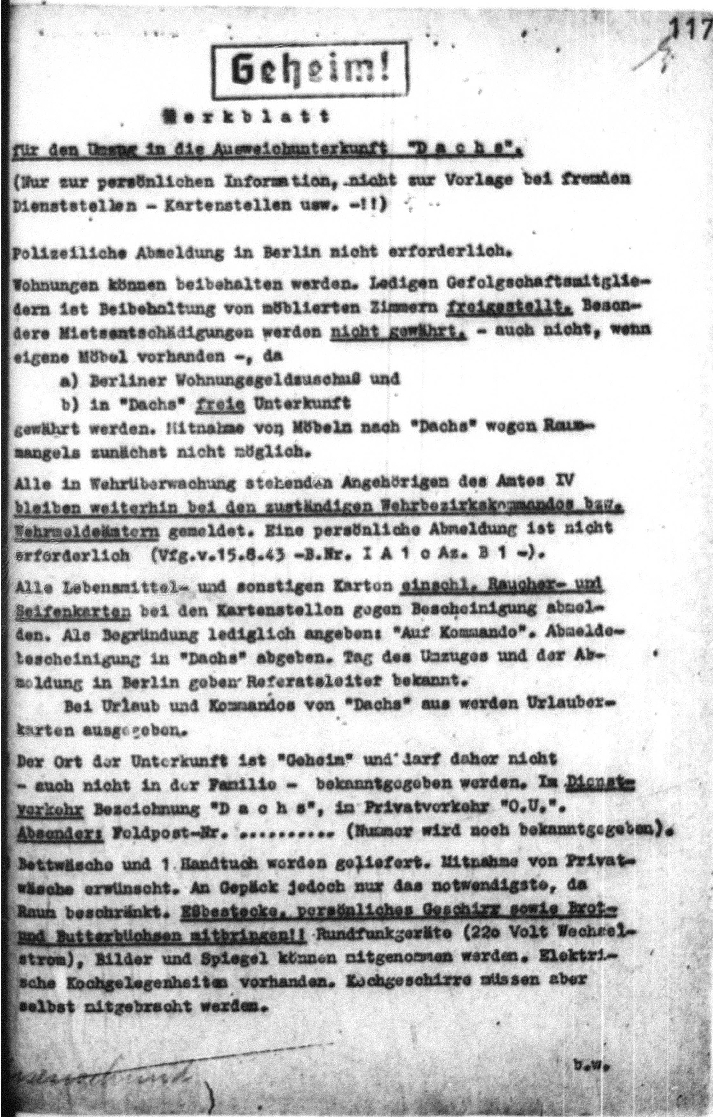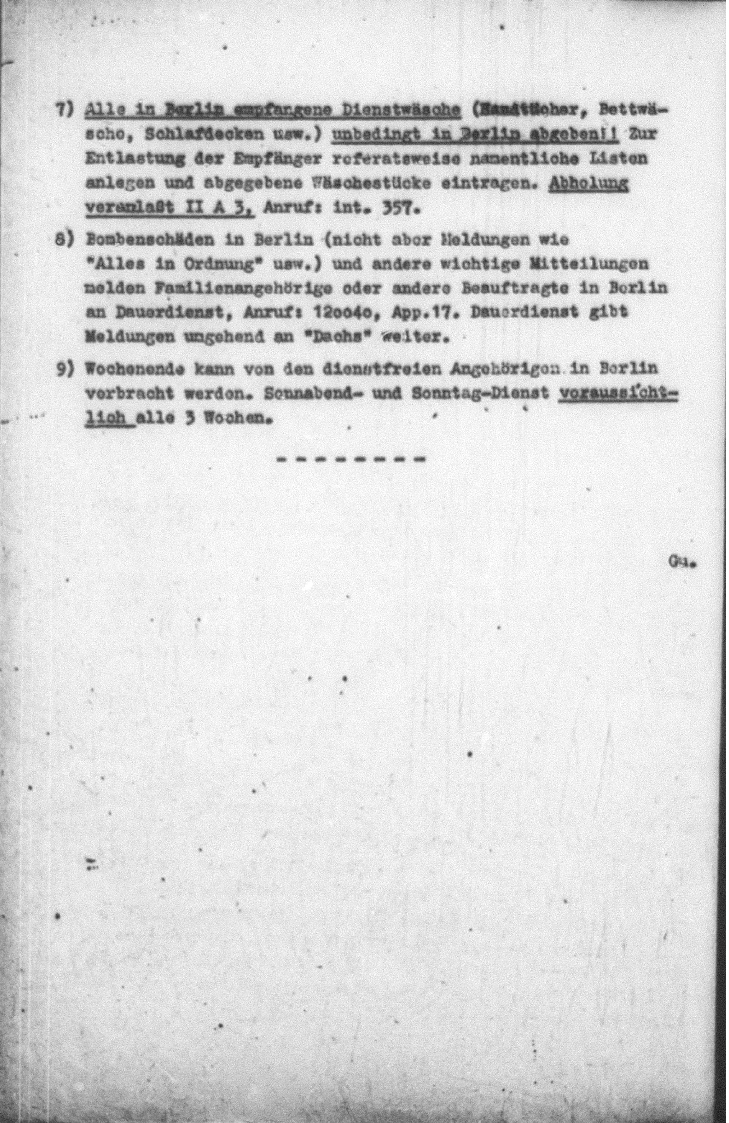
The NS apparatus in Wulkow
As the capital of the Reich and its centre of political power, Berlin was an important target of Allied bombing raids. While preparing for the war, the Nazi regime had already begun to think about bomb-proof alternative sites. In light of the increased bombardments from 1943 onwards, the leadership of the Reich Main Security Office decided to build a large alternative site in the woods near Wulkow - the largest of the RSHA with a projected 1000 employees.
In light of the increased Allied bombardments of Berlin from 1943 onwards, the leadership of the Reich Main Security Office decided to build a large alternative site in the woods near Wulkow. With construction in full swing since March 1944, the first RSHA employees moved into the temporary office (code name: Dachs) in the summer, while construction work continued elsewhere. In addition to the Opposition, Sabotage and Counterintelligence Departments, numerous Gestapo state departments, such as the "Poland Department", were also relocated to Wulkow.
Undisturbed by air raids and connected to the headquarters in Berlin by a communications cable, they were able to perform their criminal tasks in Wulkow. The employees of this department were responsible for, among other things, the racially oppressed Polish forced labourers in the Reich. For just minor offences, they were sent to concentration camps. They were also responsible for the killing of Poles, referred to by the obscure term "special treatment".
„The Jews only know that they are building for the SS. The actual names of the clients or the purpose of the building projects must not be mentioned in their presence (be vigilant on long-distance calls!)“
From the regulations for SS guards, 1944
From August 1944, the Jewish forced labourers were sent to work on a new construction site: a news barrack with the code name "Bärau" was built for the NSDAP party chancellery. Martin Bormann the head of the NSDAP party chancellery as well as one of Hitler's closest confidants and de facto deputy, was involved in all important decisions of the Nazi regime.
„In addition to the administration, various secret documents were also kept in specific barracks. [...] receipts, photographic documents, weapons and explosives that the German police had confiscated from the resistance groups [among others]. The archive of documents relating to the attempt on Hitler's life was also kept here.“
Former Wulkow prisoner, 1995
„I was ordered by Gruppenführer Müller to report to Trebnitz near Berlin on 28 January 1945. A certain number of subdivisions of Specialised Area IV were evacuated to there. This camp consisted of barracks and had the code name Dachs. [...] My job was to look through documents about the Slovakian uprising and to advise, help and inform the experts.“
Testimony of SS man Dieter Wisliceny in Nuremberg in 1945


The massive air raids on Hamburg in the summer of 1943 had a major impact on the Nazi rulers. On 31 July 1943, Reichsführer-SS and Chief of the German Police Heinrich Himmler ordered the "removal of all card indexes and important documents from Berlin to safe locations." Furthermore, the SS also planned to relocate entire offices. In the Rauen mountains between Fürstenwalde and Bad Saarow, concentration camp prisoners were forced to build an underground intelligence centre for the SS Main Command Office (code name: Fuchsbau). Other offices and housing estates for SS men and their families were built in the surrounding area. The SS Central Construction Office, founded in Bad Saarow specifically for this purpose, was in charge of satellite camps in Bad Saarow, Storkow, Spreenhagen, Kolpin and in Trebnitz, which was a little further away - the prisoners of this camp most likely also had to work on the Wulkow construction site. The relocation projects of the SS in the Fürstenwalde region and that of the Reich Main Security Office in Wulkow were linked.
- © German Federal Archives Berlin
Adolf Eichmann, the head of the Gestapo's "Jewish Department", was not only responsible for planning the alternative site, but was also present in Wulkow during the first few weeks. A short time after the first prisoners had arrived in Wulkow, however, he handed over command to his long-standing colleague Franz Stuschka. Stuschka had previously already worked at the "Central Offices for Jewish Emigration" in Vienna and Prague. He is described by almost all survivors as being both cruel and sadistic. Under his command were at least three other Austrians from the Eichmann department, some of whom also participated in the abusing of the prisoners. The guards were "ethnic Germans" (Volksdeutsche) from Romania and Hungary, the Nazi term for members of the German minority groups in Southeastern Europe. A detachment of Schutzpolizisten from Frankfurt/Oder was responsible for guarding the construction site for the NSDAP party chancellery ("Z-Baustelle").
- © Private
